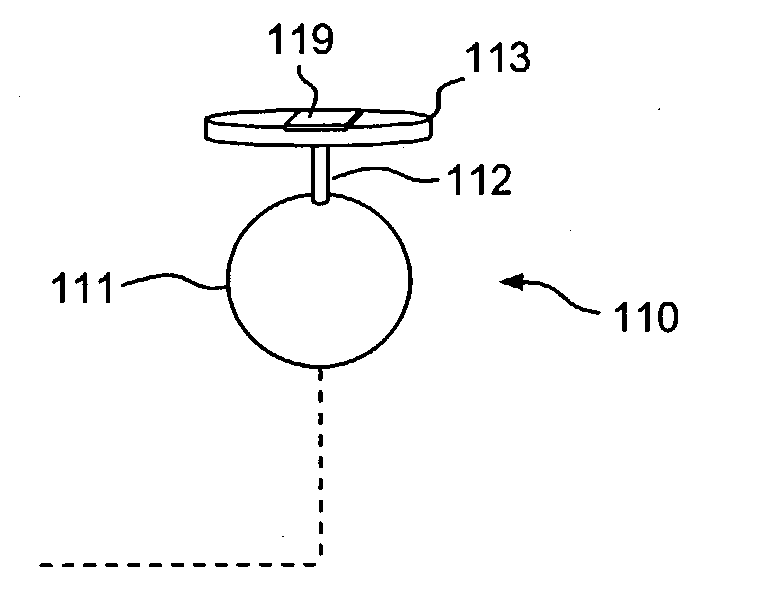Sealed sample storage element system and method
a sample and element system technology, applied in the field of sealed sample storage element system and method, can solve the problems of complex and laborious maintenance and administrative responsibilities of system operators, insufficient conventional approaches for archiving dna in cryogenic states, and high cost of creating and maintaining cryogenic systems
- Summary
- Abstract
- Description
- Claims
- Application Information
AI Technical Summary
Benefits of technology
Problems solved by technology
Method used
Image
Examples
example 2
Recovery of Retrieved Blood Plasma Archive Sample
[0183] When the sample material is required for further study, the sample node of Example 1 is retrieved from storage and transferred from the storage element or plate into a daughter plate or other suitable container. If reconstituted plasma is the desired product, 400 microliters of de-ionized, sterile, filtered water is added to the container and allowed to re-wet the node for five minutes. A plunger or rod is then used repeatedly to compress and to release the node--the node may be compressed and released ten times or more to ensure good mixing of the water and the stored biological materials. After a final compression, the liquid is collected and saved for analysis as reconstituted blood plasma. Alternatively, the re-wet node may be placed into one well of a multi-well filter plate or in the spin basket of a centrifuge filter; accordingly, the centrifuge (rather than the plunger method) may be used to recover the liquid.
example 3
Archiving of Whole Blood
[0184] Same as Example 1, except 4% SDS is added to the mixture to lyse the cells and nuclei and to free the DNA for storage.
example 4
Purification of Retrieved DNA from Blood Sample
[0185] Same as Example 2, but the node is re-wet with TE buffer and rinsed twice with TE buffer using similar techniques for liquid removal; subsequently, the node is heated to 85 degrees Celsius for five minutes in 400 microliters of de-ionized, sterile, filtered water. Recovery of the sample material may be done using either compression or centrifugation.
PUM
| Property | Measurement | Unit |
|---|---|---|
| thickness | aaaaa | aaaaa |
| diameter | aaaaa | aaaaa |
| porosity | aaaaa | aaaaa |
Abstract
Description
Claims
Application Information
 Login to View More
Login to View More - R&D
- Intellectual Property
- Life Sciences
- Materials
- Tech Scout
- Unparalleled Data Quality
- Higher Quality Content
- 60% Fewer Hallucinations
Browse by: Latest US Patents, China's latest patents, Technical Efficacy Thesaurus, Application Domain, Technology Topic, Popular Technical Reports.
© 2025 PatSnap. All rights reserved.Legal|Privacy policy|Modern Slavery Act Transparency Statement|Sitemap|About US| Contact US: help@patsnap.com



